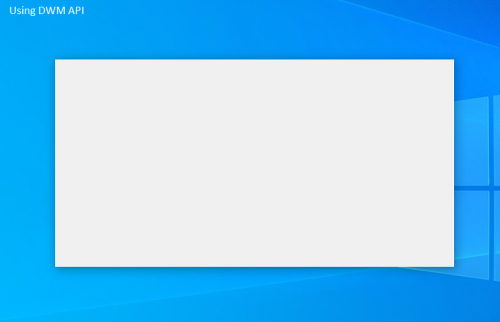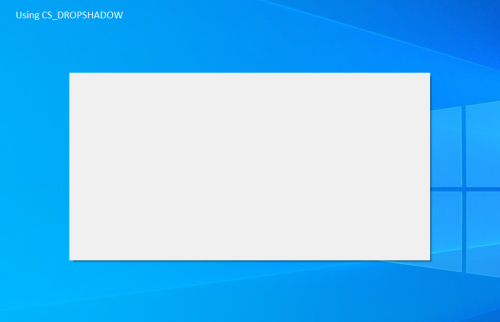-
Content Count
281 -
Joined
-
Last visited
-
Days Won
31
Posts posted by vfbb
-
-
Use this
LDic: TDictionary<TPair<Integer, Integer>, Integer>;
To search by values of the dictionary the complexity will be O(2 * N) = O(N) by looping the LDic.Values.
-
98% is the number of current active apples devices with iOS 11, 12 or 13 (versions that have support only for 64 bits apps).
In addition, the number of active devices supporting 64-bit apps may be even higher, as I am not counting those that have 64-bit support, and have not yet upgraded to iOS 11, 12 or 13
-
 1
1
-
-
The first 64-bit iphones were released 7 years ago (iPhone 5s), and today they are the vast majority (more than 98%), it is no wonder that Apple ended support for 32-bit iphones a long time ago. Apple has not even updated iOS 32-bit for more than 4 years, and Apple has not accepted 32-bit apps in its store for some years. I personally have not compiled anything for ios 32 bits for some years.
In the beginning, the 64-bit iOS kept backwards compatibility with 32-bit apps, but that ended when Apple released iOS 11. A good way to find out how many users are running only 64-bit apps is to look at the graphics of the most used versions of iOS (11, 12 and 13 have support only for 64-bit apps).
-
 3
3
-
-
5 minutes ago, Dany Marmur said:Neat!
But why "FMX"? At a quick glance it looks like it would work in a VCL project too. No?
The native System.Sensors.TGeocoder does not have support for VCL because works only in Android, iOS and MacOS. And even in Android have some small devices that does not support. And in the iOS and MacOS the result can be different than the Android because the Apple use the TomTom maps. Then, if you want a full cross platform solution, VCL or FMX, to use in all devices, include linux, having the same result, the Google Maps Geocoding is the solution.
In my case, my client have a Windows version, the System.Sensors.Geocoder not work, I should use just Google Maps Geocoding.
-
 1
1
-
 1
1
-
-
-
Getting the address of an geographic coordinates, and the reverse, getting the geographic coordinates of an address
https://github.com/viniciusfbb/fmx_tutorials/tree/master/delphi_google_geocoding/
-
 3
3
-
-
36 minutes ago, RDP1974 said:No, the canvas is inside the external frame.
The solution in plain API is here:
-
Create window with
WS_CAPTIONstyle -
Call
DwmExtendFrameIntoClientAreaWDM API passing 1 pixel top margin -
Handle
WM_NCCALCSIZEmessage, do not forward call toDefWindowProcwhile processing this message, but just return 0
(https://stackoverflow.com/questions/43818022/borderless-window-with-drop-shadow)
Roberto, now I undestand your question, but this solution not work for me.
I don't know why this line is there, but if it helps you, the same is not happening in FMX applications. The possible solution may be in the units FMX.Platform.Win or FMX.Forms.Border.Win.
-
Create window with
-
To get a beatiful shadow, use the DWM API.
Shadow in borderless form in VCL:
unit Unit3; interface uses Winapi.Windows, Winapi.Messages, System.SysUtils, System.Variants, System.Classes, Vcl.Graphics, Vcl.Controls, Vcl.Forms, Vcl.Dialogs; type TForm3 = class(TForm) private { Private declarations } function SetBordelessShadow: Boolean; protected procedure CreateParams(var AParams: TCreateParams); override; procedure CreateWindowHandle(const AParams: TCreateParams); override; procedure WndProc(var AMessage: TMessage); override; public { Public declarations } end; var Form3: TForm3; implementation uses Winapi.DwmApi, Winapi.UxTheme; {$R *.dfm} { TForm3 } procedure TForm3.CreateParams(var AParams: TCreateParams); begin inherited CreateParams(AParams); if TOSVersion.Major < 6 then begin AParams.Style := WS_POPUP; AParams.WindowClass.Style := AParams.WindowClass.Style or CS_DROPSHADOW; end; end; procedure TForm3.CreateWindowHandle(const AParams: TCreateParams); begin inherited; if TOSVersion.Major >= 6 then SetBordelessShadow; end; function TForm3.SetBordelessShadow: Boolean; var LMargins: TMargins; LPolicy: Integer; begin if TOSVersion.Major < 6 then Exit(False); LPolicy := DWMNCRP_ENABLED; Result := Succeeded(DwmSetWindowAttribute(Handle, DWMWA_NCRENDERING_POLICY, @LPolicy, SizeOf(Integer))) and DwmCompositionEnabled; if Result then begin LMargins.cxLeftWidth := 1; LMargins.cxRightWidth := 1; LMargins.cyTopHeight := 1; LMargins.cyBottomHeight := 1; Result := Succeeded(DwmExtendFrameIntoClientArea(Handle, LMargins)); end; end; procedure TForm3.WndProc(var AMessage: TMessage); begin case AMessage.Msg of WM_DWMCOMPOSITIONCHANGED, WM_DWMNCRENDERINGCHANGED: if SetBordelessShadow then begin AMessage.Result := 0; Exit; end; else end; inherited; end; end.
Note: You can do the same in FMX!
See the difference in the images attached:
-
 1
1
-
-
Darian, I name my threads/tasks with the status also (running, wait, canceled). But this is very slow, very, specially in mobile, I had to put a {$IFDEF USE_THREAD_NAME} to enable only when I need.
-
Because your stylelookup is empty and the default stylelookup of the TPanel is the 'panelstyle', and your new component don't have a default style.
Just do this:procedure TForm1.InitSpeedPanel(sp: TSpeedPanelClass); var sb: TSpeedButton; begin sp.StyleLookup := 'panelstyle'; // <<<<<<<<< // ...
-
 1
1
-
 1
1
-
-
I use this library https://github.com/CMCHTPC/DelphiDX12
This was made to be used with FPC firstly, you will see many hints and warnings compiling to Delphi. But it still works for me.
-
 1
1
-
-
Other possibility: Are you using threads/tasks for draw bitmaps? Or for change the UI?
-
-
You may be manipulating images without checking the scale of the screen. Because in Windows the scale is usually 1 so there are no problems. Try on your windows to adjust the scale to 150% and test your program.
I have a delphi crossplataform app that works perfectly on Windows, iOS and Android. It is not a game but have some cool animations that execute with 60fps without any choking and is more fast then the most of the apps that I have on my phone.
-
This is a tutorial of how to add a new Universal Link to your Delphi Firemonkey iOS app, to open your app by a link, plus some tips.
https://github.com/viniciusfbb/fmx_tutorials/blob/master/delphi_ios_universal_links/README.md
-
 2
2
-
-
I know you! You are Eric of Digifort. I am Vinícius, Paulo's brother. We started programming at the same time, about 15 years ago, at the time of intertruco, lncb, ydm. 😂😂😂. I send you my contact in private.
Eric, this tutorial that I posted is just to detect which url opened your app, to parsing the URL. This is useful just when you have many Universal Links or wildcard in the Universal Link.
I made today a tutorial explain how to configure the Universal Link, You can see here: https://github.com/viniciusfbb/fmx_tutorials/blob/master/delphi_ios_universal_links/README.md
-
About Tasks there are infinite ways to do this, try to create a bitmap for each Task, you create from outside and destroy from outside the Task. You will cancel the current Task, and without WaitFor it, create a new one with a new bitmap, when closing the form or the application you check the TPair <TBitmap, TTask> list using Task.WaitFor and then Bitmap.Free.
About the performance, I will disappoint you a little. The delphi TBitmap is meant to be used only on the main thread. Although it works in threads, it has a critical section that does not allow you to paint TBitmap and process Paint forms simultaneously. But, as I said, although it doesn't take full advantage of the computer's potential, the program will work, and it probably won't harm you.
-
Pred and Succ best use is when used with enum.
LBrushKind := Pred(LBrushKind);
replace
LBrushKind := TBrushKind(Ord(LBrushKind)-1);
-
 3
3
-
-
No, the problem is not with delphi, yo can see the full list of default font of the iOS https://developer.apple.com/fonts/system-fonts/
The current default font is Helvetica Neue. If you put a font family name that not exists, the iOS will load the Helvetica Neue font.
To avoid install custom font, the best you can do is find a similar default font to use in the iOS
-
 1
1
-
-
4 hours ago, Rollo62 said:Why do you think this is not threadsafe, because of the
AIPV6.Replace(
or because of the use of BigInteger at all ?
When using local string copies of the first case, this should be OK,
or are the BigInteger intrinsically not threadsafe (never used them yet) ?Because the used methods of the BigInteger changes a global variable.
BigInteger.Hex; BigInteger.Decimal;
But I was looking, it is possible to avoid these methods, so this new example will be safe:
uses System.SysUtils, Velthuis.BigIntegers; function IPV6ToNumberDigits(const AIPV6: string): string; var LBigInteger: BigInteger; begin if not BigInteger.TryParse(AIPV6.Replace(':', '', [rfReplaceAll]), 16, LBigInteger) then Exit(''); Result := LBigInteger.ToString; end; function NumberDigitsToIPV6(const ANumberDigits: string): string; var I: Integer; begin if ANumberDigits.IsEmpty then Exit(''); Result := BigInteger(ANumberDigits).ToHexString.ToLower.PadLeft(32, '0'); for I := 0 to 6 do Result := Result.Insert((4 * (I+1)) + I, ':'); end;
-
 1
1
-
-
uses System.SysUtils, VCL.Dialogs, Velthuis.BigIntegers; function IPV6ToNumberDigits(const AIPV6: string): string; var LBigInteger: BigInteger; begin BigInteger.Hex; LBigInteger := AIPV6.Replace(':', '', [rfReplaceAll]); BigInteger.Decimal; Result := string(LBigInteger); end; function NumberDigitsToIPV6(const ANumberDigits: string): string; var LBigInteger: BigInteger; I: Integer; begin LBigInteger := ANumberDigits; BigInteger.Hex; Result := string(LBigInteger).ToLower.PadLeft(32, '0'); BigInteger.Decimal; for I := 0 to 6 do Result := Result.Insert((4 * (I+1)) + I, ':'); end; procedure TForm1.FormCreate(Sender: TObject); const IPV6_EXAMPLE = '2001:0db8:85a3:08d3:1319:8a2e:0370:7344'; begin showmessage('Original: ' + IPV6_EXAMPLE + #13#10 + 'Number digits: ' + IPV6ToNumberDigits(IPV6_EXAMPLE) + #13#10 + 'IPV6 of the number digits: ' + NumberDigitsToIPV6(IPV6ToNumberDigits(IPV6_EXAMPLE))); end;
Result:
Original: 2001:0db8:85a3:08d3:1319:8a2e:0370:7344 Number digits: 42540766452641195744311209248773141316 IPV6 of the number digits: 2001:0db8:85a3:08d3:1319:8a2e:0370:7344
Remarks: This solution is not thread-safe.
-
And to add all library paths, I created one tool that add all paths of all platforms in one click also.
-
 1
1
-
-
To build many packages in many platforms in one click, you can just create a project group, in the icon Show Build Groups create a new with each project option (Configuration and Platforms), then you can Build or Clean all projects in different configurations/platforms in one click...
-
You need to put as string to compile.
var
b:BigInteger;
begin
b:=‘47875086426098177934326549022813196294’;
![Delphi-PRAXiS [en]](https://en.delphipraxis.net/uploads/monthly_2018_12/logo.png.be76d93fcd709295cb24de51900e5888.png)




language updates in 10.4?
in RTL and Delphi Object Pascal
Posted
@Kryvich If they implement record inheritance, now or in the future, I would prefer it to be more like an object:
In this case the record would be like a "class" arc in all platforms, like strings and dynamic arrays, but with support for operators and having the exact size of their fields. It would be incredible.
But if they don't implement inheritance, syntax better resemble the record operators that already exist, as the embaradero proposed: